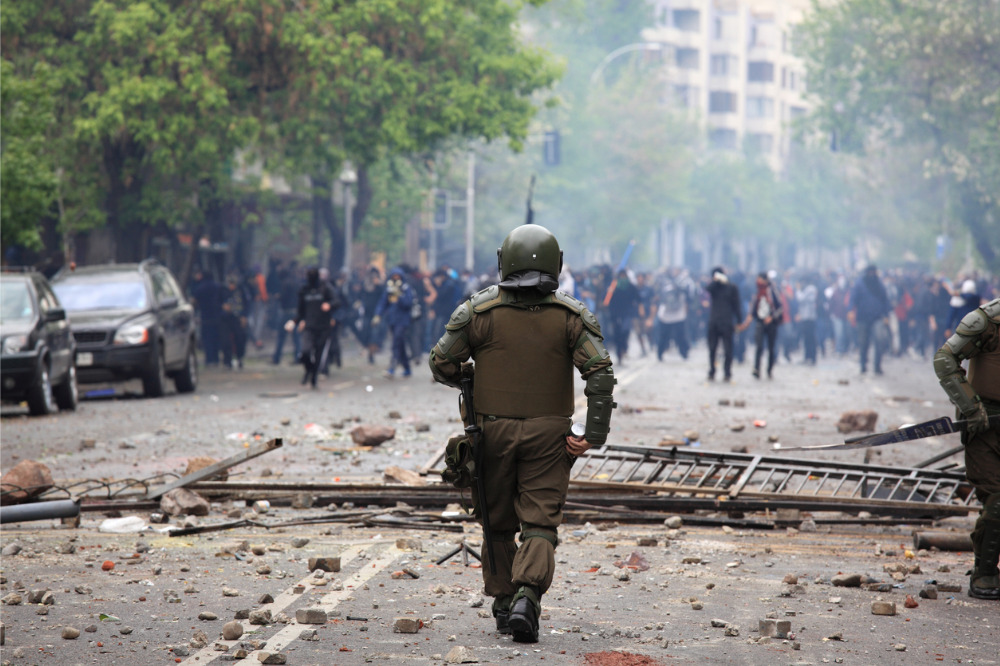
These risks have risen in advanced and emerging economies alike
Insurance News
Insurance losses from strikes, riots and civil commotion (SRCC) in certain territories are now comparable to major natural disasters, according to a new report by Howden.
Grievances about inequality, the cost-of-living crisis and broader disenfranchisement, in concert with the continuing economic fallout of COVID-19 and the war in Ukraine, have elevated SRCC risks in advanced and emerging economies alike and caused a reset in the standalone political violence market, Howden reported.
Recent outbreaks of violence in the US, Chile, South Africa and Peru spiraled to affect multiple locations and were indicative of a rising tide of discontent across the globe, Howden said. Protests in France and Israel have also made headlines in recent weeks.
This rising tide of unrest has caused insurers to reevaluate their view of risk, the report found. Property insurers are increasingly withdrawing SRCC coverage, and risk appetite in the standalone market has plummeted. What Howden called a “perfect storm” – rising demand, falling supply, triple-digit loss ratios and reinsurance retrenchment – has led to a market-changing pricing correction.
The war in Ukraine has also compounded market pressures. The war has caused one of the largest PV losses ever, while also exacerbating cost-of-living pressures and exposing other geopolitical risks, including rising tensions between the US and China.
Structural changes to loss environment
“The shift in loss profile has been stark,” Howden said in a news release. “Whereas major PV market-related losses were confined mostly to large-scale terrorist bomb attacks previously, multibillion-dollar SRCC events in Chile (2019), the United States (2020) and South Africa (2021) have led to considerable payouts for insurers and reinsurers.”
The increased frequency and severity of SRCC events has pushed the quantum of SRCC claims in South Africa and Latin America to rival or even surpass natural catastrophe losses, Howden said.
“Such devastating losses have precipitated a correction in the PV market that looks set to persist for some time to come,” said Tom Bradbrook, executive director of Howden Specialty. “Clients can therefore expect to continue to encounter difficult market conditions in 2023. For the cover that is most sought after currently – namely SRCC and full PV – line sizes are being cut across the board and certain risks are difficult to place, especially in more volatile areas. Rates are up for all perils and territories, with our pricing index showing an average increase of 80% since 2018.”
Transformational change
This evolving threat landscape has spurred the most significant recalibration to the political violence market since its inception, Howden said. After a period of high profitability lasting most of two decades, 2019 saw longstanding soft conditions, characterized by declines in pricing and strong competition, reverse in a series of losses that pushed the market into “the uncharted territory of underwriting losses,” Howden said.
After a period of rate reductions through most of the 2010s, pricing stabilized near the end of the decade before the correction began in 2020, accelerating into hard pricing territory in 2022. Pricing today is up more than 80% from its 2018 low, Howden said.
The correction is likely to continue for much of 2023, with pressures heightened by sizable tightening in the reinsurance sector during January renewals.
“Treaty reinsurance appetite in this class declined at 1 January 2023, particularly for upfront carriers unwilling or unable to meet future treaty pricing expectations,” said Steve Bessant, executive director of Howden Tiger. “The change was driven by the five key treaty reinsurers who, after recently sustaining disproportionately large losses from both standalone and all-risk policies, refused to continue on previous unprofitable conditions.
“The effect of this change varied by peril, with capacity commitments reducing for SRCC and full PV by as much as 30% and 60%, respectively, and pricing increasing significantly across the board,” Bessant said. “Event definitions and terms and conditions likewise tightened at 1 January 2023 as treaty reinsurers reduced exposures, particularly in the contingent business interruption space. These dramatic changes have cascaded down the value chain, forcing original insurers to pass on restricted wordings, higher costs and deductibles to buyers.”
Have something to say about this story? Let us know in the comments below.


